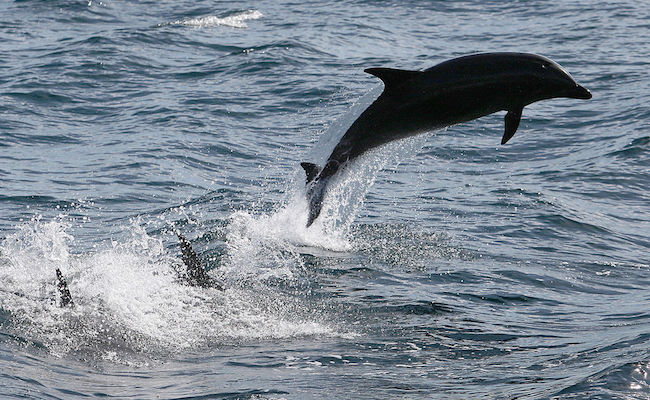
Since the documentary Blackfish – about SeaWorld’s controversial treatment of its captive killer whale population – came out, people have been protesting the existence of aquatic theme parks, and its use of captive animals for visitors’ entertainment. The death of Harambe the gorilla, after a child fell into his enclosure, has also raised the question of how humane keeping animals in zoos is. Now an aquarium is answering this question by doing something radical; it’s putting its dolphin population back into the wild.
According to the Christian Science Monitor, the National Aquarium in Baltimore will place its captive dolphins in a seaside sanctuary by 2020. This comes after a 2012 change to the aquarium’s policy, where the dolphins stopped performing scheduled shows in favor of being allowed to behave more naturally in their manmade habitat. Currently, the aquarium owns eight dolphins, seven of which were born in captivity, and one who was captured from the wild.
In an op-ed for the Baltimore Sun, National Aquarium CEO John Racanelli explained that his staff decided to make this move because it was good for the dolphins, who need a natural habitat to thrive. Racanelli writes:
Emerging science and consultation with experts have convinced us that dolphins do indeed thrive when they can form social groups, have opportunities to express natural behaviors and live in a habitat as similar as possible to that for which nature so superbly designed them.
In addition, Racanelli acknowledged that the public had become uneasy about marine parks, and that the aquarium had noticed. “Through feedback painstakingly gathered over 10 years, we have learned that the American public is increasingly uneasy with the notion of keeping dolphins and whales in captivity,” Racanelli writes. “These beliefs matter to us.”
As a result, the aquarium’s leadership team decided to build a sanctuary for these dolphins, so that they could acclimate to living in the wild again, not because it was “the cheapest or easiest option.” To them, this also signals the National Aquarium’s evolution from a place that collects marine life for entertainment purposes to an organization that promotes conservation.
This move by an organization of its kind is a pioneering one. Earlier this year, SeaWorld decided to stop breeding its orcas in captivity, but have not gone as far as to release their current population into seaside sanctuaries. Perhaps then, the National Aquarium’s move will be that sea change (heh) that gets other zoos and aquariums to follow suit.
(via Christian Science Monitor and Baltimore Sun)






